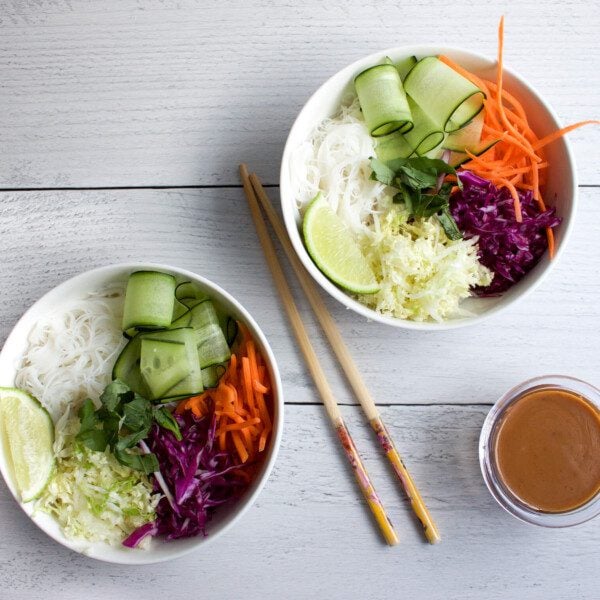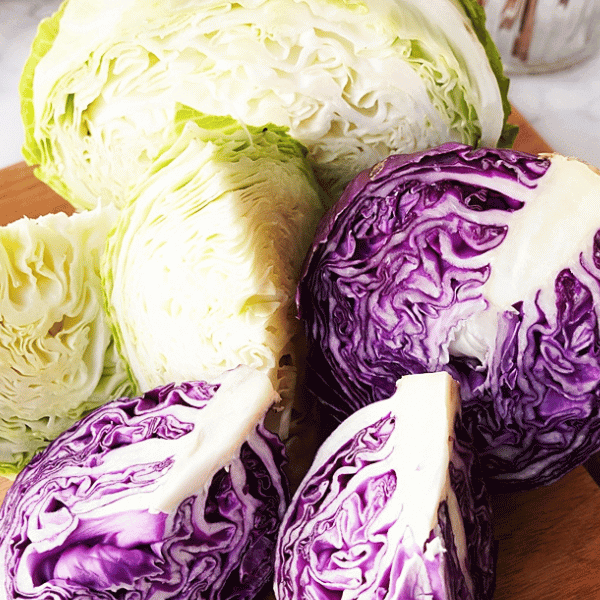How to Select Napa Cabbage
- Select a medium-sized head of Napa cabbage. It should be heavy for its size. The head should be dense and the stem should be firm.
- The leaves should be compact and tightly wrapped around the stem. They should be light green or yellow in appearance.
- Avoid Napa cabbage that has black dots or blemishes on the leaves.
When is Napa Cabbage in Season?
Napa cabbage is in season during the fall and winter, from September through February. You can find it at most US grocery stores and farmers’ markets. Look for firm, tightly packed heads with crisp, green leaves. Napa cabbage is great for salads, stir-fries, and soups. Add a fun and healthy crunch to your next family dinner.
Varieties of Napa Cabbage
About 30 varieties of napa cabbage are eaten in the United States. Napa cabbage originated in China but is now grown in many countries, including the United States. These are the most popular varieties of napa cabbage you can get at the store:
- Michihli: This is the most commonly grown variety of napa cabbage, known as Chinese cabbage. It has a pale green color and oblong shape, with wavy, frilly leaves that are slightly sweet and mild in flavor.
- Wong Bok: This variety of napa cabbage is called napa cabbage heart. It has a similar shape to Michihli but with lighter green leaves and a milder, slightly sweet taste.
- Little Jade: This smaller napa cabbage variety is perfect for stir-fries and salads. It has small, dense heads with tightly packed, bright green leaves that are crisp and a bit sweet.
- Fun Jen: This is a more compact variety of napa cabbage with short, stout leaves that are tightly packed. Fun Jen has a bit bitter taste and a firmer texture than other varieties, making it ideal for pickling.
- Blues: This unique variety of napa cabbage has a blue-green color and tightly packed leaves. It has a mild, sweet taste and a tender texture, making it great for raw and cooked dishes.
Napa Cabbage Nutrition Facts & Benefits
Napa cabbage is packed with nutrients like vitamins A and C, fiber, and antioxidants. Here are the nutritional facts for one cup serving of raw napa cabbage:
- Approx 13 calories
- 0.0 grams of fat
- 1 gram of protein
- 3 grams of carbohydrates
- 0.0 grams of natural sugar
- 1 gram of fiber
Here are proven ways that napa cabbage can benefit your health:
- Napa cabbage offers 11.75% of your daily value of folate, which improves your circulation, red blood cell production, and heart health.
- Napa cabbage is also a fantastic source of vitamin K, which boosts prothrombin production that strengthens bones.
Napa cabbage delivers 9.61% of manganese, which protects against free radicals and restores cellular damage.
How to Store Napa Cabbage
How To Store Napa Cabbage: Place your Napa cabbage head inside of a plastic bag and store it in the crisper drawer in the refrigerator for up to two weeks. Do not wash the cabbage until you are ready to use it.
How To Freeze Napa Cabbage: Wash and cut the cabbage into wedges or coarse shreds. Blanch the cabbage in boiling water for 90 seconds. Immediately transfer the cabbage to an ice bath. Drain well and pat dry. Flash freeze on a baking sheet and then transfer to an airtight container or freezer bag and freeze for up to nine months.
How to Prepare Napa Cabbage
Here are four of our favorite ways to prepare napa cabbage:
- Stir-Fry: Napa cabbage is a popular ingredient in stir-fry dishes. Slice the cabbage thinly and stir-fry with other vegetables. Its crisp texture and mild flavor make it perfect for stir-frying.
- Fermented: Napa cabbage is popular for making kimchi, a spicy Korean dish. Cut the cabbage into bite-sized pieces, then mix with a spicy seasoning paste of garlic, ginger, chili flakes, and other seasonings. Allow the mixture to ferment for a few days to develop.
- Chopped: Napa cabbage has a crunchy texture and mild flavor that complements a variety of other ingredients. Chop the cabbage into bite-size pieces. Mix it with other greens, fruits, nuts, and dressings for a refreshing salad.
Soup: Napa cabbage is great in soups. Add it to vegetable soups or ramen for added texture and nutrition. The cabbage will soften and absorb the flavors of the broth.
How to Serve Napa Cabbage
How to


